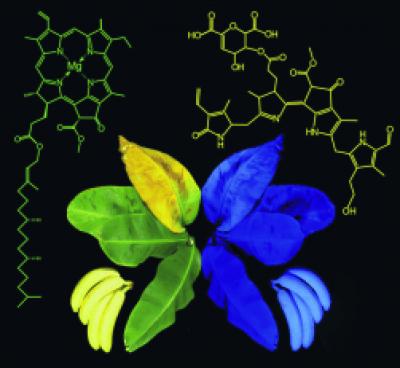Ripe bananas are of course yellow. However, under black light, the yellow bananas are bright blue, as discovered by scientists at the University of Innsbruck (Austria) and Columbia University (New York, USA). The team, headed by Bernhard Kräutler, reports in the journal Angewandte Chemie that the blue glow is connected to the degradation of chlorophyll that occurs during ripening. In this process, colorless but fluorescing breakdown products of chlorophyll are concentrated in the banana peel.
I kid you not.
